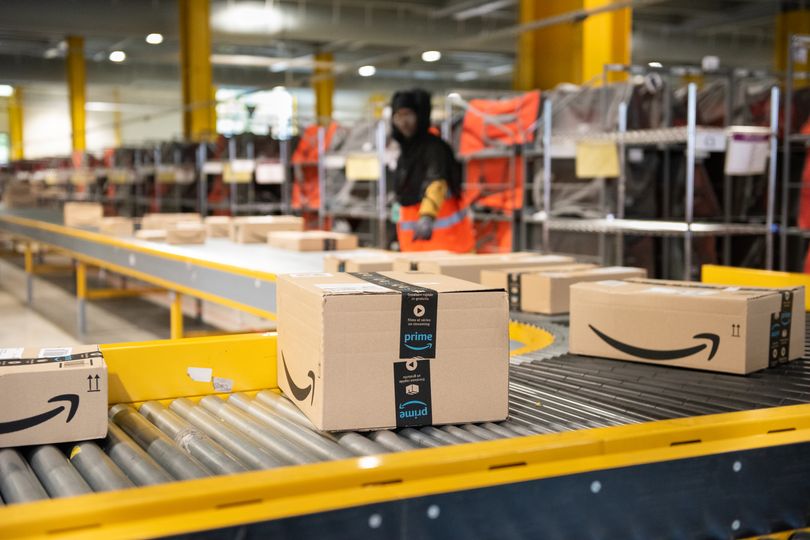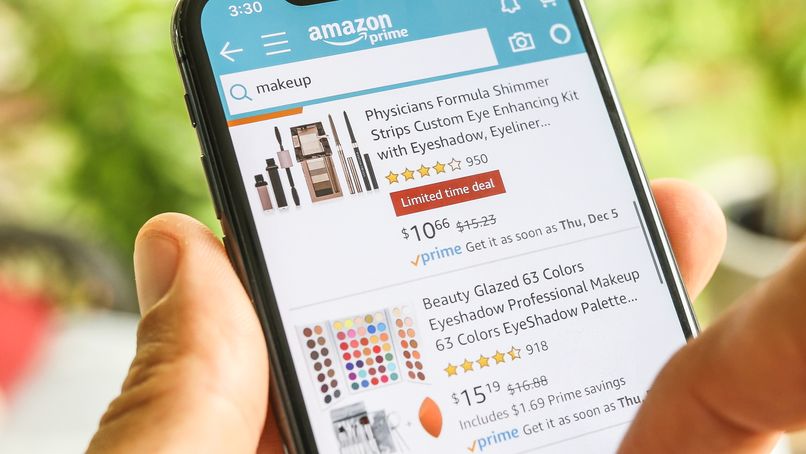The Ultimate Guide to Amazon FBA 2021
When the competition gets tough, making wise decisions becomes more important than ever. It’s best to power through the challenging moments and uses them to activate your brain to think of ways to get ahead. You can relate to this scenario easily if you are selling on Amazon, the world’s largest eCommerce website. The competition is stiff, but don’t let it discourage you as the rewards are great as well. But before reaping what you sow, you must first think of ways to stand out among your competitors.
One huge way to succeed on Amazon is picking the right delivery method. It will define whether your customers will leave good feedback or forever mark you as the brand that did not meet their delivery expectations.
Good thing the platform has the exact service you need to ensure all your orders reach your customers on time: Fulfillment By Amazon, commonly known as FBA. Check this in-depth article out if you are a rookie seller or a first-timer in trying out FBA.
What is Amazon FBA?
There are three main services you will get when you sign-up for the Amazon FBA program. Amazon will store your products, process orders from customers, pack them, and ship them out.
Storage
Has your business grown exponentially, and do you need extra space for storage? You do not need to find an extra warehouse as part of the services offered by FBA is storage. Here are the things you need to remember about storage and Amazon FBA fees:
- Storage place: Your products’ storage place will be defined by Amazon, and you will notice this when you are processing the products you need to ship.
- Storage fees: You need to pay per cubic foot for your storage fees, and the pricing changes depending on the months. January to September have lower storage fees while you need to pay higher from October until December.
Packing
Amazon has exact and strict rules for packing, and it is better to check out the packaging and preparation requirements to avoid any additional charges. If your packages arrive at Fulfillment Centers not prepared according to the guidelines, Amazon will repackage them, and you’ll incur unexpected costs.
To skip this hassle, you have three choices:
- Understand the ins and out of Amazon packing guidelines.
- Delegate the packing task to a partner shipping company that will deliver your goods to an Amazon Fulfillment Center.
- Ship your products as is and let Amazon do the packing for you.
Shipping
Sit back and relax as included in the services of FBA is shipping out orders to the customers. All you need to do is ensure that your products are always replenished, so you won’t run out of stock, affecting your product listing ranking. The only shipping you’ll need to accomplish is when you ship your products from your home or a manufacturing center to Amazon’s warehouses.
If you are shipping from a manufacturer, you need to instruct them to pack according to Amazon guidelines and send the products to the Fulfillment Center. Your products will then be shipped to your customers while you handle other essential parts of your business.
How To Enjoy Amazon FBA Services
Once you are ready to sign up for FBA, here are the steps you need to follow:
- Sign into your Amazon Seller Central account and change your shipping template to FBA in the inventory tab.
- Once done, you need to choose whether you’ll use the manufacturer or Amazon barcode. Then, send your FBA inventory.
- Know the details about your product as you’ll need to include these in your declarations.
- Your shipping plan should consist of the number of products you will be sending and whether they are in the same or different SKU.
- Will you be preparing and packaging the products, or will you delegate the packing task to Amazon? You also need to declare this detail when you sign up.
- There’s also the labeling and barcode attachment, which you can do yourself or delegate to Amazon.
- As mentioned, you cannot choose where Amazon will store your products, but you will see where they will send them in this stage of the process.
- Declaration of shipment weight and dimensions is next for the payment to be calculated. You can pay after this step.
- Remember to print two labels: the FBA box ID label and the label for the Amazon partner carrier.
- Once done, double-check the packing and tags. Finally, these packages are ready to be shipped to your partner shipping company to be sent to the Amazon warehouse.

The 5 Benefits of Amazon FBA Business
If you are still thinking about signing up for FBA, here are more reasons to help you decide:
Cheaper than shipping on your own.
If you are a rookie Amazon seller, the first delivery and shipping method you will most likely consider is shipping per order which is manageable in the beginning. Yet, in the long run, the shipping task may not be as manageable anymore, which is also good news because it means that you have a lot of orders.
Amazon has many shipping partners. The rates offered to them by these shipping companies are lower than what you will get when you ship on your own. Aside from shipping, the fulfillment fee you pay to Amazon has more inclusions than just shipping, as discussed in the next points.
Customer service is handled for you.
Customers are the lifeblood of any business, and this is one of the lessons from Amazon you will learn. You need to do everything to please your buyers and to cater to their inquiries. What you can do includes producing quality products and services. To accomplish the latter, you no longer need to establish a personal customer service team as FBA will take care of it for you. Another benefit you will enjoy is 24/7 customer service.
Trained professionals will handle all the inquiries of your customers, including shipping updates and processing returns. This minimizes the risk of getting negative reviews due to poor customer service.
FBA handles returns and repacking.
Processing returns is not an easy task as you need to appease customers and ensure all their concerns are met. Doing so ensures they don’t end up using the reviews section of your Amazon product listing to rant.
Included in the FBA program is the handling of returns. Aside from customer service, they will also be the ones to check whether the product is defective or if it is still functional. If so, Amazon will repackage the product and put it back on the shelf, ready to be sold again.
Multi-channel fulfillment for Amazon and non-Amazon sellers.
If you think the offers end there, as the famous late-night show line goes, “Wait, there’s more!” Sell your products on Amazon and other eCommerce sites like Shopify, Woocommerce, eBay, Walmart, and Etsy. You can still use FBA through the Multi-Channel Fulfillment (MCF) feature. You only need to store your products in one warehouse, and you will enjoy all services included with FBA.
MCF is also open to sellers who are not selling on Amazon. They will get all the benefits listed here. The only downside is that buyers will receive their products with Amazon packaging, although the eCommerce giant is already working on unbranded packaging.
Eligibility for Amazon Prime.
Last but not least, a benefit is the increased sales FBA will bring you when you get the Amazon Prime badge for your listing.
Who are Prime customers? These individuals pay a monthly membership to Amazon to enjoy elite services like same-day, one-day, or two-day shipping. Studies show that Prime members shop at least a few times a week—way more frequent than regular shoppers.
If you are using FBA, you will get the Amazon Prime badge, which means that your products will be available for Prime members.

What You Need To Look Out For
Ready to register for FBA, or you’ve already registered? To secure your success, below we have listed the five pitfalls sellers experience when using FBA. Knowing them ahead of time will help you proactively avoid them, or prepare you just in case you experience them.
Amazon Seller fees: non-moving stocks cost you more.
The longer your items stay in the Amazon warehouse, the more money you will shell out because of the monthly storage fees. If the storage time reaches more than 365 days, you will be charged long-term storage fees.
To avoid this from happening, send only the products you know will sell. How will you know it will sell? In-depth market research helps greatly. You can also heighten your marketing campaigns inside and outside Amazon to entice more customers to buy your products. Through these, you are giving the best chance of movement to your products inside the Fulfillment Centers.
More returns than sales.
There are a total of 72 reasons classified by Amazon for valid returns, and they can also determine whose fault it is immediately. One challenge you may face is getting more returns than sales. As a result, you do not get any sales, and the chance of getting negative feedback from customers increases.
The solution is not that complicated. First, you need to ensure that all the products sent to Amazon Fulfillment Centers are of quality, do not have any defects, and work as intended. Make sure that you provide clear product descriptions and bullet points so your customers are fully informed of what they are buying.
Commingling products may affect your reviews.
In Amazon’s Fulfillment Centers, the same FBA products are placed together instead of by seller classification. Therefore, the chances of a product from another seller being sent to your customer because you have the same products is possible.
To stop this from occurring, check out Amazon Brand Registry—one of its key features is getting unique barcodes for your products that customers can scan to check if the product they receive is legitimate. To enjoy this, you need to register for the service. You will enjoy more offers like Enhanced Brand Content and assistance on your intellectual property application, aside from the Transparency barcodes.
Ready To Use FBA?
Now that you know all the details about FBA, are you ready to incorporate this service into your Amazon business? There may be many things to watch out for, but surely, risks are needed to achieve success. Besides, now that you know the possible downsides, you’ll know how to handle them if you ever come face-to-face with them.
You will reap many benefits when you become an Amazon FBA seller. Many tasks will be taken off your plate, so you can focus on your product manufacturing, quality checks, data monitoring and analysis, and continuous planning to better your business. The advantages you will get will be worth the risks, so go for it!









